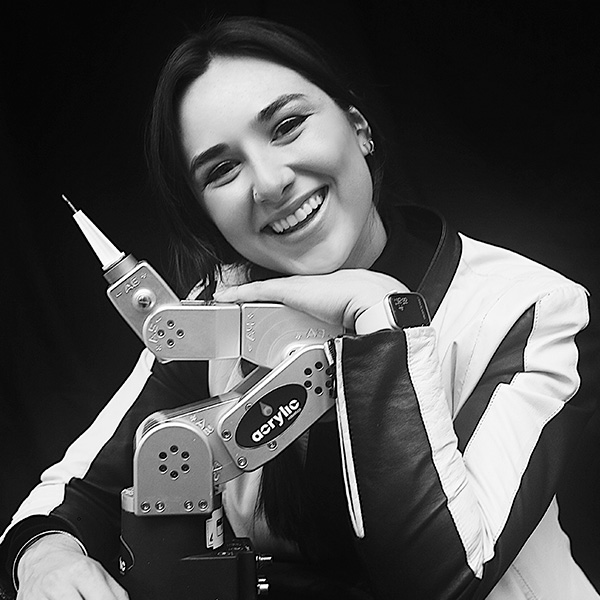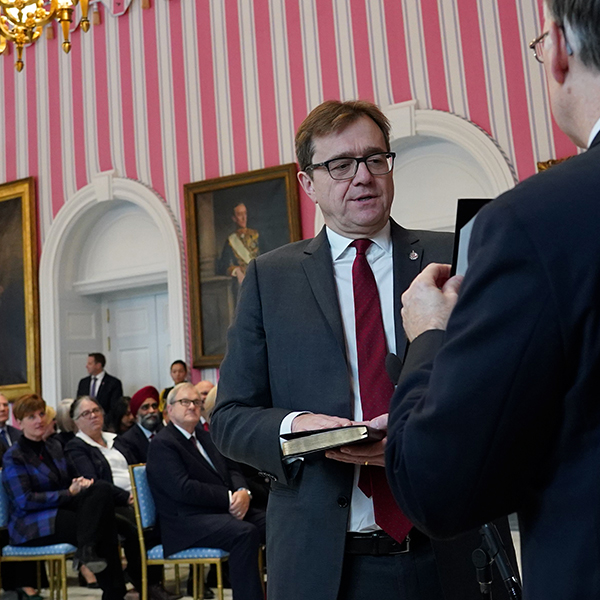As titles go, the ones attached to Prosanta Chakrabarty’s name are hard to beat.
The Montreal-born, New York-raised evolutionary biologist is an ‘ichthyologist’ and ‘curator of fishes’.
His work sounds just as compelling, taking him around the world in pursuit of new species of fish in caves and other habitats.
Chakrabarty, BSc(Agr)’00, is an associate professor at Louisiana State University where he’s the curator of fishes at the LSU Museum of Natural Science.
“People like it, yeah, it’s a little bit unusual,” says Chakrabarty of his fish title. “That’s my favourite part, the curator of fishes, I get to do all the fun stuff.”
The museum has about a half million fish specimens that it sends out on loan, “that we’re actively studying or that we are documenting the life on earth with.”
To date, he has discovered 13 new species of fish.
“Those are always serendipitous. We don’t know that we’ll find new species until we kind of find them,” says Chakrabarty who has gone on some 30 international trips with students from his lab.
What’s he’s trying to do is “find disjunctions and connections – so things that are widely separated but connected by evolution.” For instance, finding things on either side of the Isthmus of Panama, “can tell us about the connection of North and South America.
“And things that are in the Persian Gulf can tell us about how that region, which is only 20,000 years old, is different from the Bay of Bengal, which is much older, but still connected via the Indian Ocean. So what we’re looking at is connections that can tell us about earth history or evolution. And so, that’s why I’m kind of bouncing around the globe to collect specimens, so we can study their DNA and their morphology, to better understand that history.”
Chakrabarty returns home with hundreds of fish from each trip. Collecting them doesn’t always sound like a task for the faint of heart.
“I always tell people you can’t predict what somebody behind their computer will be like when confronted with walking through the Amazon Rainforest … I always dreamt of doing that stuff and I love it. It is an adventure, and it is sometimes scary.”
In Madagascar, where he discovered a cave fish, they all got sick from the water in the sinkhole.
“We always say we discover new species and new diseases … some unnamed.”
The field work can involve many days on boats as they’ve done on the Amazon River, the Gulf of Mexico and recently, going around Tahiti. “Or it could be pulling nets – seines as we call them – through fresh waters, basically driving from bridge to bridge and dragging a net on either side of the water. Or it could be going into these caves.”
The Amazon basin has 6,000 species of fishes and “nobody on earth knows all of them,” Chakrabarty says. “What we do is we get it down as close as we can to family, or genus, if we’re lucky. And then when we’re back (home) doing our comparative work we can say ‘OK, this is this species based on these features’. And yes, there are field guides. But nothing beats having another specimen in hand. And that’s how you discover that maybe you have something new.”
Chakrabarty gets to name the fish species he discovers. The Latinized terms aren’t usually funny monikers, although a cave fish from near the University of Indiana bears the playful name Amblyopsis hoosieri, after the university’s Hoosiers team name.
Growing up in Queens, N.Y., Chakrabarty loved animals but wasn’t yet captivated by fish.
“I think my only fish experience was fishing in a kind of a gross little pond in Queens and having my watch stolen and my fish taken from me by some older kids because it wasn’t the best neighbourhood.”
He would beg his parents to take him to the American Museum of Natural History, the Bronx Zoo and the aquarium in Brooklyn, and ended up working at all three places as a teenager.
At McGill, he majored in zoology and met his wife, Annemarie Noel, BSc(Agr)’01. They even wed on McGill’s Macdonald campus. “I loved McGill. I rave about McGill. I tell everyone I know,” says Chakrabarty, who received a Macdonald Distinguished Young Alumni Award in 2012.
During his junior year at McGill, he did an internship project at the American Museum of Natural History that set him on the path to ichthyology.
Chakrabarty got to spread the word about his branch of zoology when he was selected as a TED fellow in 2016. In January, he was named a TED2018 Senior Fellow.
“It’s the best networking opportunity in the world, as far as I can tell. You just meet so many amazing people – an incredible diversity of speakers in terms of racial, ethnic and also just professional backgrounds.”
If you have an idea, it’s also a great place to share it with the world, says Chakrabarty whose 2016 TED Talk focused on cave fishes and drew a much broader audience than he could otherwise have reached.
“So a million people know more about cave fish because of my little talk than I could have ever have presented in my life.”


